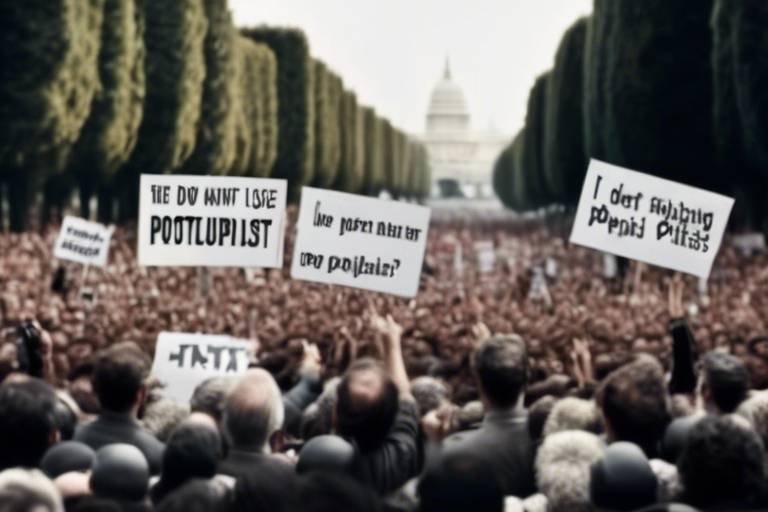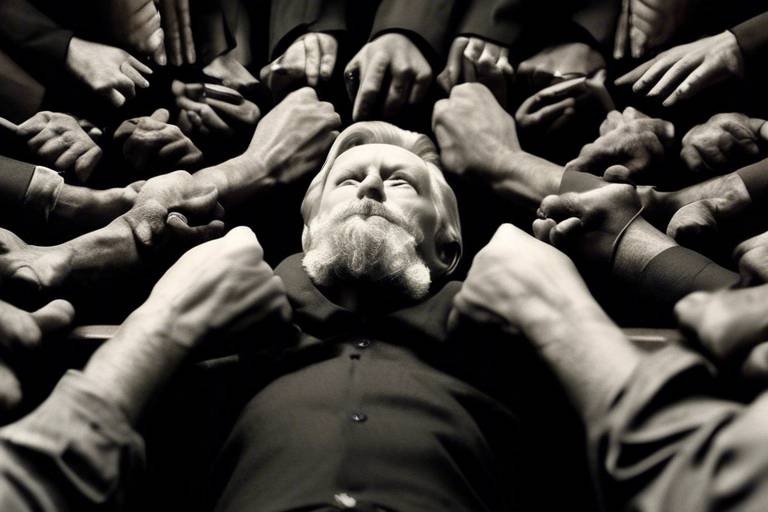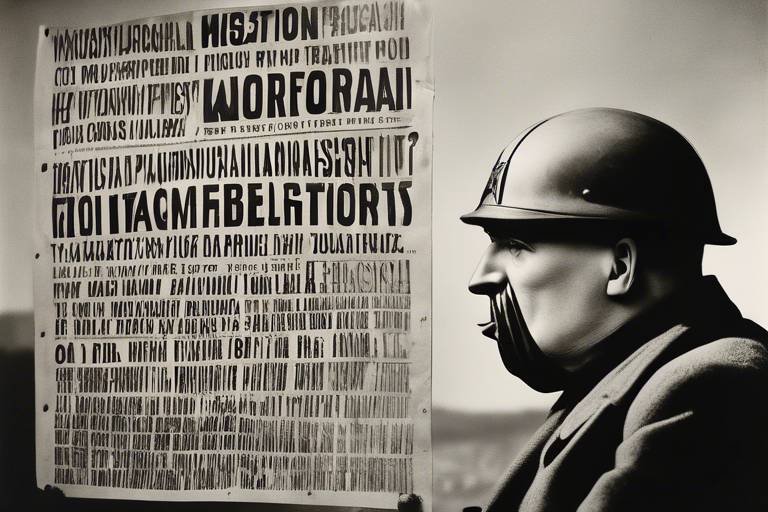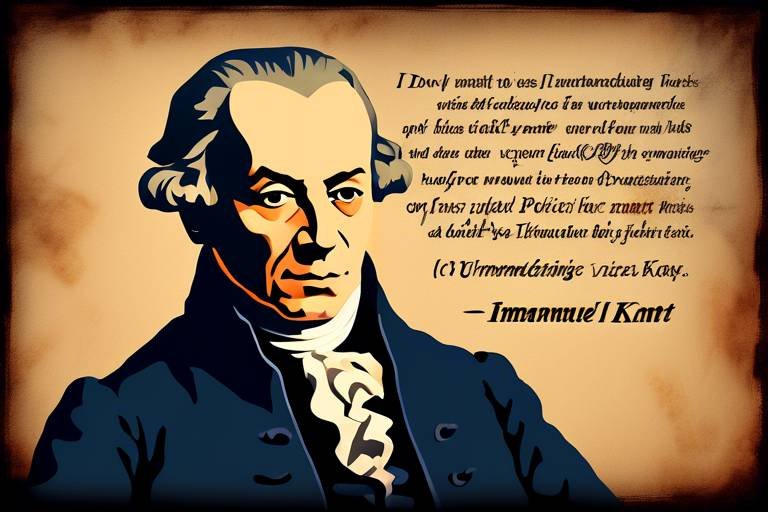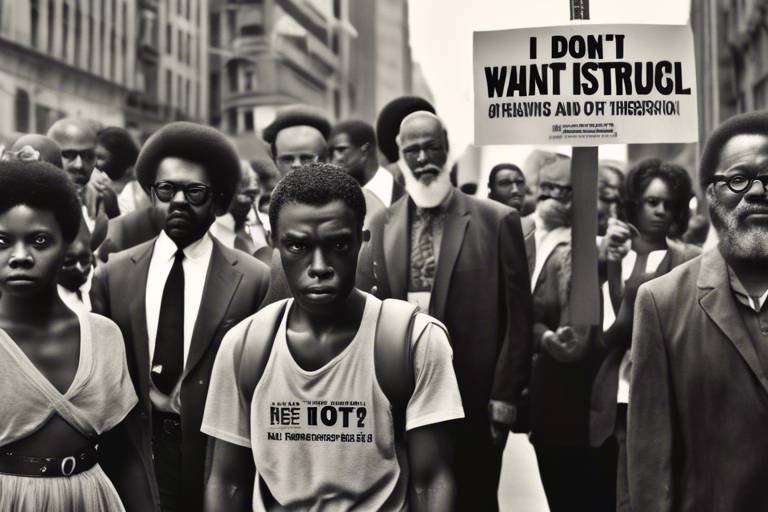The Philosophy and Politics of Police Brutality
Police brutality is a topic that ignites intense debate and reflection across society. At its core, it raises profound questions about the ethical responsibilities of law enforcement, the political frameworks that govern their actions, and the societal implications of their conduct. When we think about police brutality, we often picture those heart-wrenching moments captured on video—moments that expose the raw and often devastating realities of excessive force. But to understand this phenomenon fully, we need to dive deeper into the philosophical and political landscapes that shape these events.
Imagine for a moment a world where law enforcement is not just a mechanism of control but a pillar of community trust and safety. In an ideal scenario, police officers would embody the principles of justice, fairness, and respect for human rights. Yet, the reality is often starkly different. The **philosophy** behind policing is frequently at odds with the **politics** that dictate how officers operate. This disconnect can lead to an environment where brutality becomes not just a possibility, but a troubling norm.
At the philosophical level, we grapple with questions like: What gives law enforcement the right to use force? When is it justified, and when does it cross the line into brutality? These questions aren't just academic; they resonate deeply in the lives of those affected by police actions. The ethical frameworks that guide police conduct are often influenced by broader societal values, which can vary dramatically from one community to another. This inconsistency leads to a patchwork of policing practices, where some communities may experience heavy-handed tactics while others enjoy a more community-oriented approach.
On the political front, the conversation surrounding police brutality is often shaped by **legislation**, **public opinion**, and **media representation**. Political leaders may respond to public outcry with promises of reform, but these reforms can be slow to materialize and often lack the teeth needed to effect real change. It's a delicate balance—while politicians must respond to the voices of their constituents, they also need to navigate the complex relationships with law enforcement agencies that often support their campaigns.
In summary, the interplay between the philosophy and politics of police brutality is intricate and multifaceted. Understanding this relationship is crucial for anyone looking to advocate for meaningful change in law enforcement practices. As we continue to confront the realities of police brutality, we must engage in these conversations, challenging both the ethical frameworks that justify excessive force and the political structures that allow it to persist.
- What is police brutality? Police brutality refers to the use of excessive force by law enforcement officers, often resulting in injury or death to individuals.
- What are the causes of police brutality? Causes can include systemic issues within police organizations, lack of accountability, inadequate training, and societal attitudes towards law enforcement.
- How can we prevent police brutality? Prevention can be achieved through reforms in training, policies, community engagement, and establishing strong accountability mechanisms.
- What role does the media play in police brutality discussions? Media representation can shape public perception, influence policy changes, and act as a catalyst for activism and reform.
- How can civilians hold police accountable? Civilian oversight committees, community engagement, and legal reforms are essential in ensuring police accountability.

The Ethical Framework of Police Brutality
Understanding the ethical dilemmas faced by law enforcement is crucial for grasping the complexities of police brutality. At the heart of this issue lies a profound struggle between the duty to protect and serve the community and the moral implications of using force. The philosophical perspectives that shape our views on police actions often reflect broader societal values and ethical considerations. For instance, utilitarianism, which advocates for actions that maximize overall happiness, can complicate the justification of police force. When officers resort to violence, they may argue that it's necessary to maintain public order; however, this raises the question: at what cost to individual rights and community trust?
Moreover, ethical theories such as deontology, which emphasizes the importance of duty and rules, challenge the notion that any means justify the ends. If a police officer uses excessive force, even with the intention of preventing a crime, it contradicts the moral obligation to respect human dignity. This creates a moral paradox: how do we balance the need for law enforcement with the ethical obligation to uphold justice and equity?
Additionally, the concept of social contract theory plays a significant role in understanding police brutality. This theory posits that individuals consent to surrender some freedoms in exchange for protection and order provided by the state. However, when law enforcement fails to uphold their end of the bargain by engaging in brutality, it creates a breach of trust between the community and the police. This breach can lead to a cycle of distrust, fear, and resistance, further complicating the relationship between law enforcement and the communities they serve.
To further illustrate these ethical dilemmas, consider the following table that outlines different ethical frameworks and their implications for police actions:
| Ethical Framework | Key Principle | Implication for Police Actions |
|---|---|---|
| Utilitarianism | Maximizing overall happiness | Justifies force if it leads to greater good, but risks harming individuals |
| Deontology | Duty to uphold moral rules | Condemns excessive force regardless of outcomes, emphasizing rights |
| Social Contract Theory | Mutual agreement for protection | Breaches trust when police use brutality, leading to societal unrest |
In conclusion, the ethical framework surrounding police brutality is not merely an academic exercise; it has real-world implications that affect lives and communities. By examining these philosophical perspectives, we can better understand the moral complexities that law enforcement faces and the societal expectations placed upon them. This understanding is vital for fostering a more just and equitable approach to policing, where the rights and dignity of every individual are respected.

The landscape of law enforcement is riddled with systemic issues that contribute to the prevalence of police brutality. These problems are not isolated incidents but rather symptoms of a larger, more complex framework that governs how police operate. At the core of these issues lies a culture that often prioritizes aggression over de-escalation, leading to an environment where excessive force becomes a norm rather than an exception. Understanding these systemic problems is essential for addressing the root causes of police misconduct and fostering a more just and equitable society.
One of the most pressing issues is the training practices employed within police departments. Many officers receive insufficient training on how to handle high-stress situations without resorting to violence. For instance, while physical training is emphasized, the importance of conflict resolution and communication skills often takes a backseat. This lack of comprehensive training can lead to misunderstandings and heightened tensions, making it easier for officers to default to force as a means of control. Furthermore, the training that is provided can sometimes reinforce negative stereotypes, particularly against marginalized communities, perpetuating a cycle of fear and aggression.
Additionally, institutional structures within police organizations can create barriers to accountability. Hierarchical systems often discourage officers from reporting misconduct among their peers, fostering a culture of silence and complicity. This 'blue wall of silence' can prevent necessary reforms and perpetuate a cycle of violence. Officers may fear retaliation or ostracism if they speak out against inappropriate behavior, leading to a lack of transparency and trust within the community. This dynamic not only affects the officers but also erodes public confidence in law enforcement as a whole.
Moreover, policies that govern use-of-force protocols are often vague and open to interpretation. In many cases, these policies fail to provide clear guidelines on when and how officers should engage with suspects. This ambiguity can lead to arbitrary decisions, where officers may feel justified in using force even in situations where it is unwarranted. The absence of strict regulations can create an environment where police brutality is not just possible but, alarmingly, expected.
To illustrate these systemic issues, consider the following table that outlines the key factors contributing to police brutality:
| Systemic Issue | Description |
|---|---|
| Inadequate Training | Officers often lack training in conflict resolution and de-escalation techniques. |
| Cultural Barriers | A culture that prioritizes aggression can lead to excessive use of force. |
| Lack of Accountability | Hierarchical structures discourage reporting of misconduct among officers. |
| Vague Use-of-Force Policies | Ambiguous guidelines allow for subjective interpretation of necessary force. |
Addressing these systemic issues requires a multifaceted approach. It is crucial for police departments to engage in comprehensive training programs that emphasize de-escalation, communication, and community engagement. Furthermore, implementing clear and strict use-of-force policies can help mitigate instances of brutality. Lastly, fostering a culture of accountability where officers feel empowered to report misconduct is essential for rebuilding trust between law enforcement and the communities they serve.
- What are the main causes of police brutality?
Police brutality often stems from inadequate training, cultural barriers within police departments, and vague use-of-force policies.
- How can police accountability be improved?
Improving police accountability involves implementing strict oversight mechanisms, fostering a culture of transparency, and ensuring that officers are held responsible for their actions.
- What role does community engagement play in reducing police brutality?
Community engagement is vital as it helps to build trust between law enforcement and the community, encouraging cooperation and open dialogue.

Accountability is the bedrock of any functional law enforcement system, yet it often feels like a distant dream for many communities affected by police brutality. Imagine a world where every action taken by a police officer was scrutinized, where their decisions were transparent, and where the community had a say in the oversight of those who are sworn to protect them. This is not just an idealistic vision; it is a necessity for restoring trust between law enforcement and the communities they serve. The question arises: how can we ensure that police officers are held accountable for their actions?
First and foremost, we need robust oversight mechanisms in place. Accountability bodies—such as independent review boards—play a critical role in investigating complaints against officers. These bodies should be composed of community members who can bring diverse perspectives and experiences to the table. When civilians are involved in the oversight process, it fosters a sense of ownership and trust. After all, how can we expect police to serve the community effectively if they are not held accountable by the very people they are meant to protect?
Moreover, the integration of technology can significantly enhance accountability. Body cameras, for example, have become a focal point in discussions about police transparency. When officers know they are being recorded, they are less likely to engage in misconduct. However, the mere presence of technology is not enough; policies must be established regarding the use and storage of this footage. A table summarizing the benefits and challenges of body cameras might look like this:
| Benefits | Challenges |
|---|---|
| Increases transparency in police interactions | Potential privacy concerns for civilians |
| Provides evidence in misconduct cases | Footage may be manipulated or withheld |
| Encourages better behavior from officers | High costs of implementation and maintenance |
Legal frameworks also play a pivotal role in ensuring accountability. Recent legislative reforms aimed at curbing police brutality have focused on enhancing the consequences for officers who engage in excessive force. For instance, laws that allow for civil suits against police officers can serve as a deterrent. Yet, these reforms must be supported by consistent political will and community advocacy to be effective. It’s not just about passing laws; it’s about creating a culture of accountability within law enforcement agencies.
Additionally, community involvement in policing cannot be overstated. When community members are actively engaged in dialogues about policing practices, it creates a feedback loop that benefits everyone. This can take various forms, such as town hall meetings, community forums, or even social media campaigns that encourage public discourse on police accountability. The more voices that contribute to the conversation, the more comprehensive the solutions can be.
In conclusion, the role of accountability in addressing police brutality is multifaceted and requires a collaborative approach. From independent oversight committees to legal reforms and community engagement, each element plays a crucial role in fostering a system where police officers are held accountable for their actions. As we strive for a society where justice prevails, it is imperative that we prioritize accountability as a fundamental pillar of law enforcement.
- What are the main mechanisms for police accountability?
The main mechanisms include independent oversight bodies, legal reforms, community engagement, and the use of technology such as body cameras.
- How do body cameras contribute to police accountability?
Body cameras increase transparency, provide evidence in misconduct cases, and encourage better behavior from officers.
- Why is community involvement important in policing?
Community involvement fosters trust, ensures diverse perspectives are considered, and creates a feedback loop that benefits law enforcement practices.

Civilian oversight committees are essential mechanisms designed to enhance transparency and accountability within law enforcement agencies. These committees act as a bridge between the police and the community, providing a platform for citizens to voice their concerns and experiences regarding police conduct. Imagine a scenario where the community feels disconnected from those sworn to protect them; civilian oversight committees aim to close that gap, fostering trust and cooperation. By incorporating civilian perspectives, these committees can critically assess police practices and recommend reforms that align with community values.
The effectiveness of civilian oversight committees often hinges on several key factors. First and foremost, their independence is crucial. When these committees operate free from police influence, they can conduct impartial investigations into allegations of misconduct. This independence not only bolsters public confidence but also encourages officers to adhere to ethical standards, knowing that their actions are subject to scrutiny. Moreover, the composition of these committees plays a significant role; a diverse body that reflects the community's demographics can provide a more comprehensive understanding of the issues at hand.
Another vital aspect is the power these committees hold. While they typically do not have the authority to enforce disciplinary actions, their findings can be influential. For instance, when a committee uncovers patterns of abuse or systemic issues, their reports can lead to significant policy changes within the department. This highlights the importance of community engagement; when citizens are actively involved in oversight, they can push for reforms that promote justice and equity.
However, challenges remain. Some critics argue that civilian oversight committees can be ineffective if they lack the necessary resources or authority to enact change. Without proper funding, training, and access to information, these committees may struggle to fulfill their mandates. Additionally, there may be resistance from police departments that feel threatened by external scrutiny. To overcome these obstacles, it is essential for local governments to provide adequate support and establish clear guidelines that empower these committees to function effectively.
In conclusion, civilian oversight committees represent a crucial step toward enhancing police accountability. By fostering transparency, engaging the community, and advocating for reform, these committees can help create a more just and equitable law enforcement system. As society continues to grapple with issues of police brutality, the role of civilian oversight will only become more significant, serving as a beacon of hope for those seeking justice and reform.
- What is the purpose of civilian oversight committees?
These committees aim to enhance transparency and accountability in law enforcement by allowing citizens to participate in the oversight of police conduct. - How do civilian oversight committees operate?
They typically conduct investigations into police misconduct, review complaints, and make recommendations for policy changes to improve policing practices. - Are civilian oversight committees independent?
Yes, for these committees to be effective, they must operate independently from law enforcement agencies to ensure impartiality in their investigations. - What challenges do civilian oversight committees face?
Challenges include lack of resources, authority, and potential resistance from police departments, which can hinder their effectiveness.

Legal reforms are more than just a series of legislative changes; they represent a fundamental shift in how society views police accountability and the protection of citizens' rights. In recent years, the conversation surrounding police brutality has intensified, leading to a growing demand for reforms that not only address misconduct but also prevent it from occurring in the first place. One of the most pressing issues is the need for comprehensive laws that clearly define the use of force and establish strict guidelines for law enforcement officers. Without these parameters, the line between justified and excessive force can become blurred, leaving citizens vulnerable.
Moreover, reforms should focus on enhancing transparency within police departments. For instance, implementing mandatory body cameras has emerged as a crucial step toward accountability. These devices not only serve as a record of interactions between police and the public but also deter potential misconduct. However, the effectiveness of such measures hinges on proper legislation that governs the use, storage, and accessibility of footage. Without clear laws, footage can be manipulated or withheld, undermining public trust.
Another significant area for reform is the establishment of independent oversight bodies that can investigate allegations of police misconduct. These bodies should operate free from police influence, ensuring that investigations are fair and impartial. The presence of civilian oversight committees has proven effective in various jurisdictions, providing a platform for community members to voice their concerns and participate in the oversight process. This not only fosters a sense of accountability but also strengthens the relationship between law enforcement and the communities they serve.
To illustrate the impact of legal reforms, consider the following table that outlines recent legislative changes aimed at addressing police brutality across different states:
| State | Legislative Change | Year Enacted |
|---|---|---|
| California | SB 1421: Increased transparency in police misconduct records | 2019 |
| New York | Eric Garner Anti-Chokehold Act: Bans chokeholds by police | 2020 |
| Colorado | HB 20-217: Reforms police practices and accountability measures | 2020 |
| Washington | SB 5066: Bans the use of facial recognition technology by police | 2021 |
These reforms are not merely symbolic; they represent a crucial step towards rebuilding trust between law enforcement and the communities they serve. However, legal reforms alone are insufficient. They must be accompanied by cultural shifts within police departments that prioritize de-escalation techniques, community engagement, and respect for civil rights. Training programs should be revamped to emphasize these values, ensuring that officers are equipped to handle situations without resorting to violence.
Ultimately, the goal of legal reforms should be to create a system where accountability is not just an afterthought but a foundational principle of law enforcement. This requires ongoing dialogue between legislators, law enforcement agencies, and the communities they serve. As we move forward, it is essential to remain vigilant and advocate for reforms that protect citizens while holding officers accountable for their actions.
- What are the main goals of police reform? The primary goals include increasing accountability, preventing police misconduct, and fostering better community relationships.
- How can civilians participate in police oversight? Civilians can engage through community forums, participate in oversight committees, and advocate for transparency in police practices.
- What role does media play in police accountability? Media coverage can raise awareness about police misconduct and influence public opinion, which can lead to calls for reform.

The political landscape surrounding police brutality is as complex as it is dynamic. When incidents of police violence erupt, they often trigger a wave of political discourse that can lead to significant changes in policy and public opinion. Politicians from various parties respond in different ways, often reflecting their constituencies' sentiments and the broader social climate. For instance, some leaders advocate for immediate reforms, while others may downplay the issue, leading to a polarized debate that can further entrench divisions within society.
One of the most notable aspects of political responses is the role of public protests. These demonstrations have become a powerful catalyst for change, as they mobilize citizens and draw attention to the urgent need for reform. The Black Lives Matter movement, for example, has played a critical role in raising awareness about police brutality, pushing it to the forefront of political agendas. When large groups of people take to the streets, demanding justice and accountability, it becomes increasingly difficult for politicians to ignore the issue. This grassroots activism often pressures lawmakers to consider reforms that they might have previously overlooked.
In response to public outcry, many local and state governments have begun to implement measures aimed at reducing police violence. These can include changes to use-of-force policies, enhanced training for officers, and the establishment of community policing initiatives. However, the effectiveness of these reforms can vary significantly. While some areas see a decline in incidents of brutality, others may struggle to implement meaningful change due to entrenched institutional cultures that resist reform.
Moreover, the political response to police brutality is not just about local or state actions; it also involves federal legislation. In recent years, there have been attempts to pass comprehensive police reform bills at the national level. These proposals often include provisions for increased accountability, such as the establishment of national databases to track police misconduct, as well as funding for body cameras and training programs focused on de-escalation techniques. However, the passage of such legislation is often met with resistance, reflecting the broader ideological divides within Congress.
Another critical aspect of political responses is the role of accountability. The establishment of independent oversight bodies can help ensure that police officers are held accountable for their actions. These bodies often consist of civilians who review complaints against police officers and investigate incidents of alleged misconduct. The effectiveness of these committees can significantly influence public trust in law enforcement. When communities feel that there is a transparent and fair process for addressing grievances, it fosters a sense of accountability and encourages constructive dialogue between citizens and police.
In summary, the political responses to police brutality are multifaceted and influenced by a variety of factors, including public sentiment, grassroots activism, and institutional resistance to change. As society continues to grapple with these issues, the interaction between citizens, law enforcement, and political leaders will play a crucial role in shaping the future of policing in America.
- What is police brutality? Police brutality refers to the use of excessive force by law enforcement officers, often resulting in injury or death to individuals.
- How can communities hold police accountable? Communities can hold police accountable through civilian oversight committees, public protests, and advocating for legislative reforms.
- What role does the media play in police brutality cases? The media shapes public perception and discourse about police brutality, influencing how incidents are reported and understood by the public.
- Are there any recent legislative changes regarding police brutality? Yes, various states have introduced bills aimed at increasing police accountability and reforming use-of-force policies.

Media representation of police brutality is not just a reflection of reality; it actively shapes public perception and influences societal attitudes toward law enforcement practices. When we turn on our screens, whether it’s the news or social media, we are bombarded with images and narratives that can evoke strong emotions. These portrayals can either reinforce negative stereotypes or foster a deeper understanding of the complexities surrounding police actions. For instance, a viral video capturing an incident of police violence can spark outrage and mobilize communities, but it can also lead to desensitization if such events are depicted as commonplace. The power of media lies in its ability to frame these incidents, often determining how they are perceived by the public.
Consider the following aspects of media representation:
- News Coverage: Traditional news outlets often prioritize sensationalism over context, leading to skewed perceptions of law enforcement. This can create a narrative that portrays all police officers as either heroes or villains, neglecting the nuanced reality of their roles.
- Social Media: Platforms like Twitter and Instagram have become battlegrounds for activism, where individuals share their experiences and demand accountability. This democratization of information allows marginalized voices to be heard, but it also raises questions about the accuracy and reliability of the information being disseminated.
- Documentaries: Films and documentaries that delve into police brutality can provide critical insights and humanize the victims. They often serve as educational tools that challenge viewers to confront uncomfortable truths about systemic racism and violence.
Moreover, the impact of media representation extends beyond immediate reactions. It influences policy discussions, shapes the narratives that politicians use, and can even affect the judicial process. For example, when high-profile cases of police brutality receive extensive media coverage, they can lead to public outcry and demands for change, prompting lawmakers to propose reforms. Conversely, if such incidents are downplayed or ignored, they can perpetuate a cycle of violence and impunity.
In a world where information spreads rapidly, the responsibility of media outlets is immense. They must strive for accuracy, balance, and integrity in their reporting. This is not just about reporting the facts; it’s about understanding the broader implications of their narratives. A single story can ignite a movement, while a misrepresented incident can lead to further division and mistrust between communities and law enforcement.
In conclusion, the impact of media representation on police brutality is profound and multifaceted. As consumers of media, we have a role to play in seeking out diverse perspectives and questioning the narratives presented to us. By doing so, we can contribute to a more informed and empathetic society that holds law enforcement accountable and works towards justice for all.
- How does media representation affect public perception of police brutality?
Media representation can shape how the public views police actions, often leading to either heightened awareness or desensitization depending on the narrative presented. - What role does social media play in activism against police brutality?
Social media serves as a powerful tool for activism, allowing individuals to share their experiences, mobilize support, and demand accountability from law enforcement. - Can documentaries influence policy changes regarding police brutality?
Yes, documentaries can raise awareness and provide critical insights that may lead to public outcry and subsequent policy reforms.

In today's digital age, social media has emerged as a powerful tool for activism, particularly in the fight against police brutality. Platforms like Twitter, Facebook, and Instagram have become virtual town squares where voices can be amplified, and stories can be shared at lightning speed. Imagine a world where a single tweet can spark a movement, where hashtags like #BlackLivesMatter become rallying cries that transcend geographical boundaries. This is the reality we live in, and it’s reshaping the landscape of social justice.
Social media allows activists to bypass traditional media gatekeepers, giving them the freedom to frame their narratives. When incidents of police brutality occur, videos captured by bystanders often go viral, providing undeniable evidence that demands attention. For example, the horrific footage of George Floyd's death not only ignited protests across the globe but also led to a surge in online activism, with millions of people using their platforms to express outrage and demand justice. This kind of immediate and widespread dissemination of information can lead to a rapid mobilization of support, creating a sense of urgency that is hard to ignore.
Moreover, social media fosters community engagement in ways that were previously unimaginable. Activists can connect with like-minded individuals, organize events, and share resources to educate others about the systemic issues surrounding police brutality. Platforms facilitate discussions that might not happen in person, breaking down barriers and allowing for a diverse array of voices to be heard. This democratization of information means that anyone with a smartphone can contribute to the conversation, making activism more inclusive and representative.
However, it's essential to recognize that the role of social media in activism is not without its challenges. The same platforms that empower voices can also spread misinformation, leading to confusion and division. For instance, during protests, false information can circulate rapidly, undermining the credibility of the movement. Activists must navigate this double-edged sword, ensuring that the information they share is accurate and constructive. Additionally, the phenomenon of "slacktivism"—where individuals feel they have contributed to a cause simply by liking or sharing a post—can dilute the impact of genuine activism. It raises the question: are we just scrolling through our feeds, or are we truly committed to making a difference?
In conclusion, social media plays a pivotal role in the activism surrounding police brutality, serving as a catalyst for change and a platform for marginalized voices. As we continue to witness the evolution of digital activism, it is crucial for individuals to engage thoughtfully and purposefully. By harnessing the power of social media responsibly, we can contribute to a more just society and hold law enforcement accountable for their actions.
- How has social media changed the landscape of activism?
Social media has democratized activism, allowing anyone with internet access to participate, share information, and mobilize support quickly. - What are the risks associated with social media activism?
Misinformation can spread rapidly, and there’s a risk of slacktivism, where individuals believe they’ve contributed to a cause by simply liking or sharing posts. - Can social media lead to real-world change?
Yes, social media has been instrumental in organizing protests, raising awareness, and influencing public policy, as seen in various movements against police brutality.

The portrayal of police brutality in mainstream media plays a pivotal role in shaping public perception and discourse. When incidents of police violence make headlines, they can evoke a wide range of emotions—from outrage to despair. But have you ever considered how the framing of these stories influences our understanding of the issues at hand? The narratives constructed by news outlets often reflect deeper societal biases and can either perpetuate harmful stereotypes or foster a more nuanced understanding of the complexities surrounding law enforcement practices.
For instance, when a police officer is involved in a controversial incident, the media's choice of words can significantly impact how the public perceives the event. Terms like "riot" versus "protest," or "suspect" versus "victim," can color the narrative and sway public opinion. A study conducted by the Media Research Center found that the language used in news reports often aligns with specific political agendas, which can lead to a skewed representation of events. This selective framing not only affects individual cases but also contributes to a broader societal narrative about law enforcement and race relations in the United States.
Moreover, the rise of social media has altered how mainstream media operates. With the advent of platforms like Twitter and Facebook, news stories can spread like wildfire, often before traditional news outlets have a chance to verify the facts. This immediacy can lead to sensationalized coverage, where the focus is on grabbing attention rather than providing context. As a result, the public may form opinions based on incomplete information, which can exacerbate tensions between communities and law enforcement.
To illustrate the impact of media narratives, consider the following table that highlights key differences in coverage between two high-profile police brutality cases:
| Case | Media Headline | Framing |
|---|---|---|
| Case A | "Officer Saves Child from Violent Protest" | Heroic portrayal of police action |
| Case B | "Unarmed Man Shot by Police During Arrest" | Victim-focused narrative highlighting police misconduct |
As you can see, the headlines can create vastly different perceptions of similar incidents. In Case A, the police are portrayed as heroes, while in Case B, the narrative centers on the victim's tragedy. This kind of disparity can lead to polarized opinions on policing and can hinder constructive dialogue about necessary reforms.
Furthermore, mainstream media has a responsibility to report ethically and accurately. However, the competition for ratings often pushes outlets to prioritize sensational stories over comprehensive reporting. This can lead to a cycle where audiences are fed narratives that reinforce existing biases, rather than challenging them. It begs the question: how can we, as consumers of media, demand better representation and more balanced narratives?
In conclusion, the narratives constructed by mainstream media around police brutality are not merely reflections of events; they are powerful tools that shape societal attitudes and influence public policy. As we engage with these narratives, it is essential to remain critical and seek out diverse perspectives to foster a more informed and empathetic understanding of the complexities surrounding law enforcement and community relations.
- What role does media play in shaping public perception of police brutality?
Media serves as a lens through which the public views incidents of police violence, influencing opinions and discussions through its choice of language and framing. - How can social media impact the coverage of police brutality?
Social media can accelerate the spread of information, sometimes leading to sensationalism and incomplete narratives, which can affect public perception before traditional media has a chance to verify facts. - What can be done to improve media representation of police brutality?
Advocating for ethical journalism, supporting diverse media voices, and critically engaging with news stories can help improve the representation of police brutality in mainstream media.
Frequently Asked Questions
- What is police brutality?
Police brutality refers to the use of excessive force by law enforcement officers during their interactions with the public. This can include physical violence, verbal abuse, and other forms of misconduct that violate the rights of individuals.
- What ethical considerations surround police brutality?
Ethical considerations involve the moral implications of police actions. Different philosophical perspectives, such as utilitarianism and deontological ethics, can shape how we view the justification of force in policing. These frameworks help us understand the dilemmas officers face in high-pressure situations.
- How do systemic issues contribute to police brutality?
Systemic issues within law enforcement agencies, such as inadequate training, poor leadership, and institutional racism, can create an environment where brutality is more likely to occur. These factors can perpetuate a culture of violence and discrimination, making it essential to address them for meaningful reform.
- What role does accountability play in preventing police misconduct?
Accountability is crucial for addressing police misconduct. Oversight bodies, community involvement, and legal frameworks work together to hold officers accountable for their actions. Without these measures, there is little incentive for change within police departments.
- How effective are civilian oversight committees?
Civilian oversight committees can be effective in promoting transparency and accountability in policing. By providing a platform for community voices, these committees can help bridge the gap between law enforcement and the public, fostering trust and cooperation.
- What recent legal reforms have been implemented to combat police brutality?
Recent legal reforms aimed at combating police brutality include changes to use-of-force policies, the establishment of independent review boards, and legislation that enhances penalties for officers who engage in misconduct. These reforms are designed to protect citizens' rights and ensure justice.
- How do political responses influence police brutality policies?
Political responses can significantly influence how police brutality is addressed. Public protests and advocacy can lead to legislative changes, while political discourse shapes the narrative around law enforcement practices. The interplay between community activism and political will is vital for reform.
- What impact does media representation have on public perception of police brutality?
Media representation plays a critical role in shaping public perception of police brutality. Coverage by mainstream media, social media narratives, and documentaries can either perpetuate stereotypes or foster a deeper understanding of the issues at hand, influencing societal attitudes toward law enforcement.
- How has social media changed activism related to police brutality?
Social media has revolutionized activism by providing platforms for awareness and mobilization. It allows individuals to share experiences, organize protests, and demand justice more effectively than ever before, creating a powerful tool for community engagement and reform.
- What are the broader societal implications of police brutality?
The broader societal implications of police brutality include erosion of trust in law enforcement, increased community tensions, and a call for systemic reforms. Addressing these issues is essential for fostering a safer and more equitable society.




